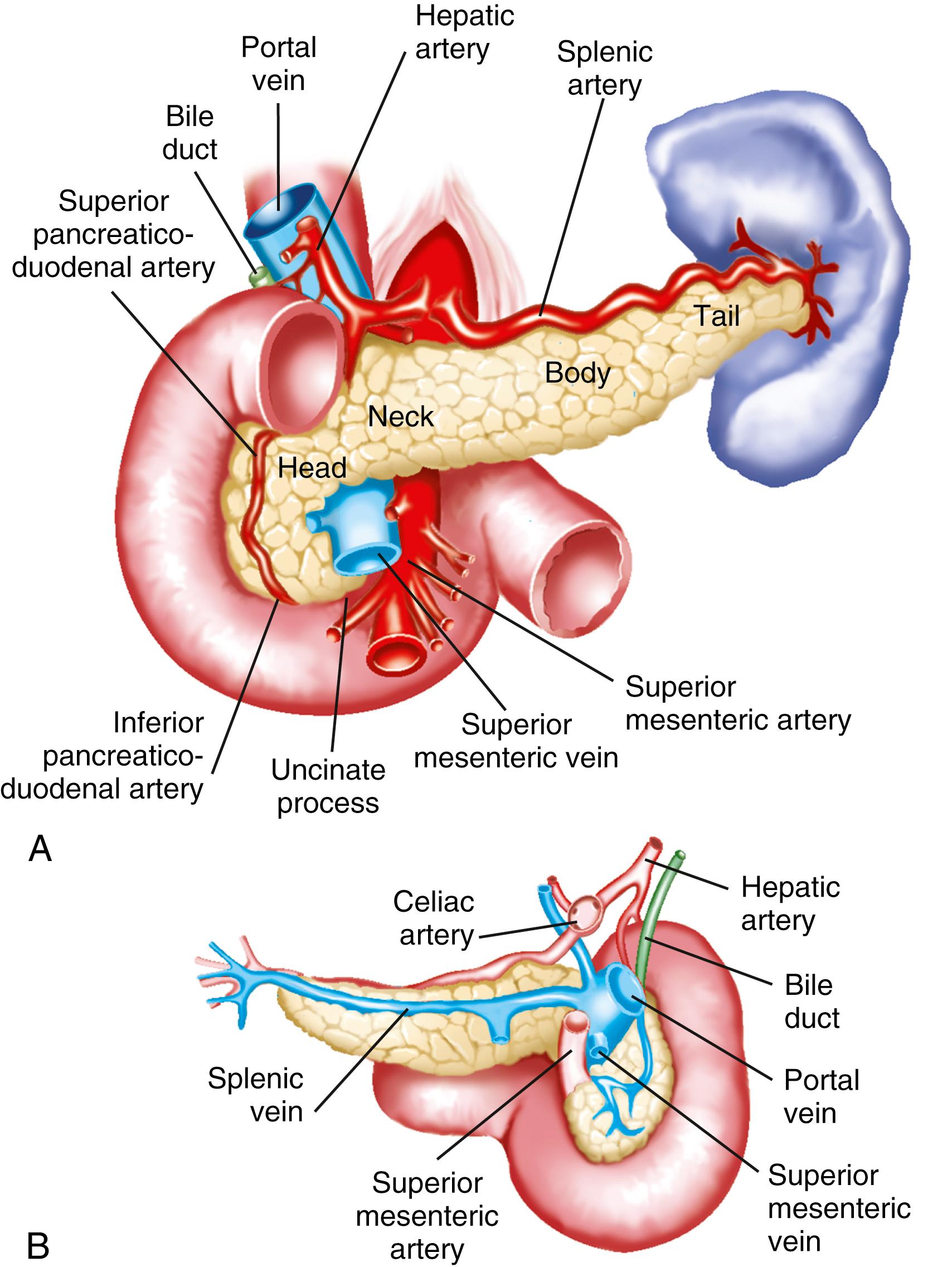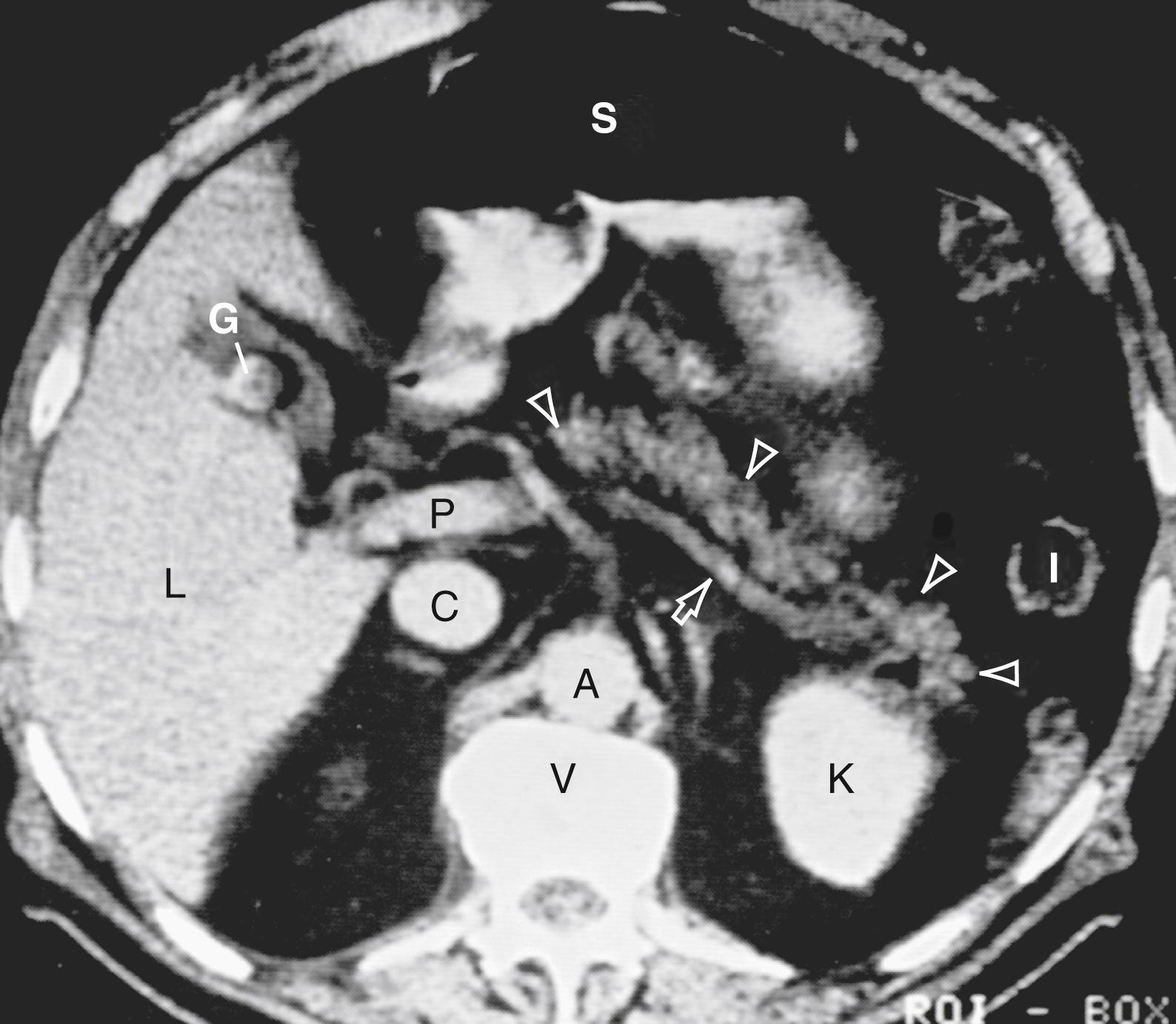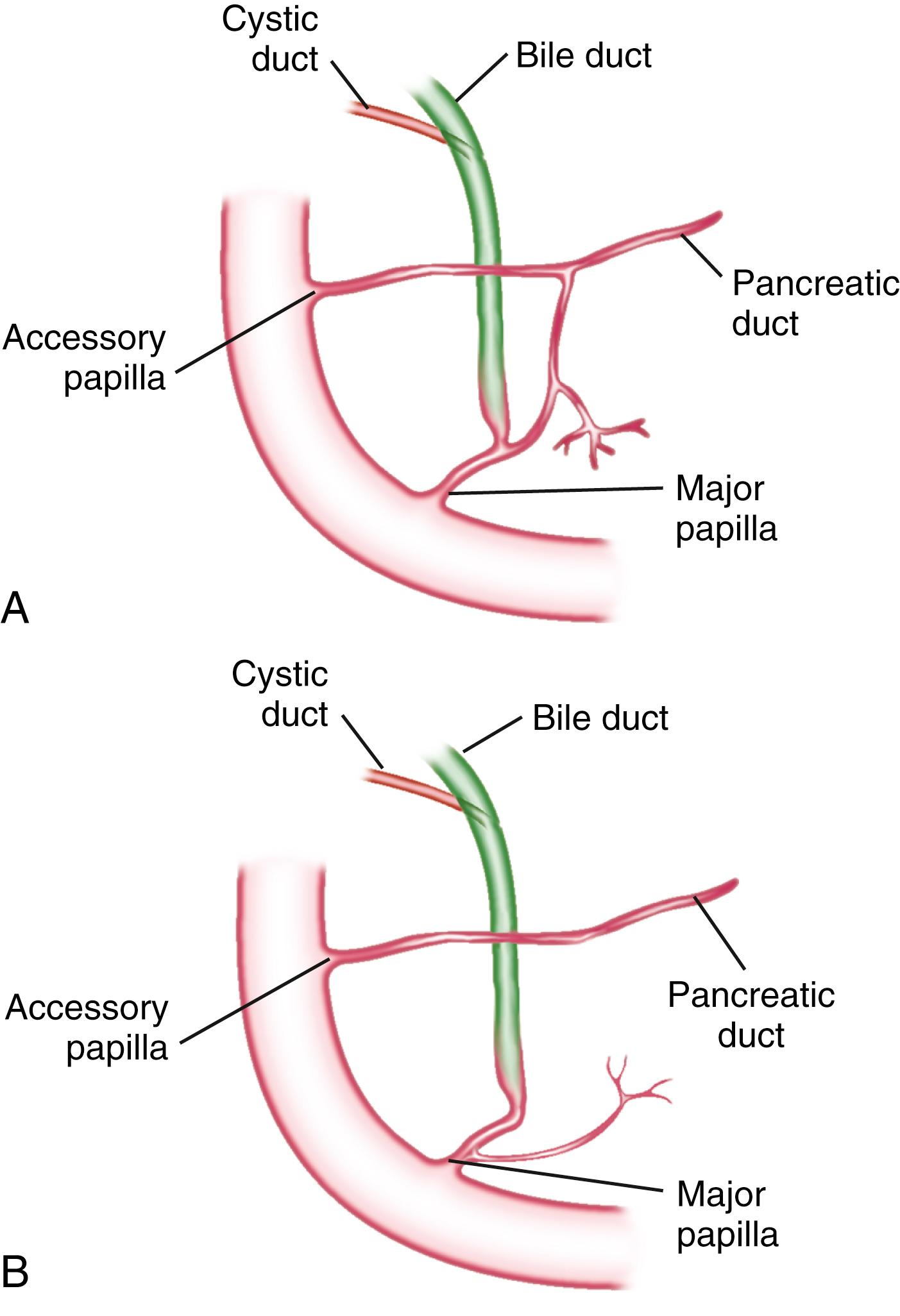Physical Address
304 North Cardinal St.
Dorchester Center, MA 02124
Although the identity of the pancreas has been known for some time, its critical digestive functions were only recently appreciated. , The first description of the pancreas was made by the Greek physician Herophilos at around 300 bc . In the late first century ad , another Greek authority, Rufus of Ephesus, named the organ the “pancreas.” The term literally means “all flesh or meat,” which distinguished it from bone or cartilage. Unfortunately, the name “kalikreas,” meaning “beautiful flesh,” given to the organ by Galen around the same time or shortly after Rufus, was not adopted. Nonetheless, Galen thought the pancreas served to support and protect overlying blood vessels. In the Talmud, the central text of Jewish law, the pancreas was referred to as the “finger of the liver.” Vesalius considered the organ a cushion for the stomach. In 1642, Wirsung characterized the pancreatic ducts of humans, and in 1664, de Graaf discovered pancreatic secretions from the pancreatic fistula of dogs.
The digestive action of pancreatic secretions was discovered almost 200 years later. Eberle in 1834, Purkinje and Pappenheim in 1836, and Valentin in 1844 observed that pancreatic juice emulsified fat, proteolyzed proteins, and digested starch, respectively. Bernard subsequently demonstrated the combined digestive action of pancreatic juice using secretions from pancreatic fistula preparations. In 1876, Kuhne introduced the term “enzyme” and was the first to isolate trypsin. The concept of enzymes quickly led to the identification of pancreatic amylase and lipase. In 1889, Chepovalnikoff, a student of Pavlov, discovered enterokinase in the duodenal mucosa, an enzyme that is essential for activating trypsin and the subsequent cascade of other digestive proteases. In 1895, Dolinsky, another of Pavlov’s students, stimulated pancreatic secretion by instilling acid into the duodenum. This led to the discovery of secretin in 1902 by Bayliss and Starling, which was the first hormone ever to be identified.
The histologic structure of the pancreas was first described in 1869 by Langerhans. Shortly thereafter, Heidenhain found that as the granular region of pancreatic acinar cells disappeared after feeding, enzymatic activity in pancreatic juice inversely increased; he correctly concluded that the granules contained digestive enzyme precursors, or zymogens. In 1875, Friedreich wrote the first systematic description of pancreatic diseases, followed by a classic account by Fitz on acute pancreatitis in 1889.
The pancreas first came to the attention of the Nobel Committee in 1905, when Ivan Pavlov was awarded the prize for his work on the physiology of digestion, with particular emphasis on neural control of the stomach and pancreas. In 1923, Canadians Frederick Banting and John Macleod were awarded the prize for successfully purifying insulin from the pancreas of dogs. It is notable that a medical student, Charles Best, was a co-discoverer and shared the prize money with Macleod. In 1946, John Northrop co-shared the Nobel Prize for his work on purifying enzymes in their crystalline form. Among the pancreatic enzymes, he managed to crystallize trypsin, chymotrypsin, and carboxypeptidase. In 1958, Frederick Sanger received his first Nobel Prize for determining the structure of insulin. Sanger, however, is best known for his second Nobel Prize, in 1980, for developing a signature method for sequencing DNA. In 1974, George Palade, along with Albert Claude and Christian de Duve, received the Nobel Prize for making seminal discoveries in cell biology. Palade used the pancreatic acinar cell, in combination with newly developed techniques of differential centrifugation, electron microscopy, and pulse-chase, to describe the role of ribosomes along the endoplasmic reticulum (rough ER) in synthesizing proteins and the transit of proteins through the Golgi apparatus into secretory pathways. In 1977, Rosalyn Yalow received the prize for the development of radio-immunoassays of peptide hormones, in which the prototype was insulin. She worked with Solomon Berson, but he unfortunately died before the Nobel Prize was awarded. Most recently, Günter Blobel won the prize in 1999 for his work using pancreatic acinar cells to discover intrinsic signaling mechanisms governing intracellular protein transport and localization. These awards demonstrate how the study of the pancreas continues to advance major scientific development.
The pancreas is a soft, elongated, flattened gland that is 12 to 20 cm in length. The adult gland weighs between 70 and 110 g. The pancreas is coarsely lobulated and covered with fine connective tissue, without a true capsule. It is primarily retroperitoneal, lying approximately at the level of the L1-L2 lumbar vertebrae. The head of the pancreas is on the right, lying within the curvature of the duodenum, and the remainder of the pancreas lies obliquely in the posterior abdomen, with the tail extending as far as the gastric surface of the spleen ( Fig. 55.1 ).

The anterior surface of the head of the pancreas is adjacent to the pylorus, the first part of the duodenum, and the transverse colon. The posterior surface abuts the hilum and medial border of the right kidney, the inferior vena cava and the right renal vessels, the right gonadal vein, and the right crus of the diaphragm.
The uncinate process (lingula) is a prolongation of pancreatic tissue that projects off the lower part of the pancreatic head, extending upward and to the left. The uncinate process lies anterior to the aorta and inferior vena cava and is covered superiorly by the superior mesenteric vessels that emerge below the neck of the pancreas. There is much variation in the size and shape of the uncinate process, and it may even be absent altogether.
The neck of the pancreas is a constricted part of the gland, extending from the head of the pancreas toward the left to connect the head with the body of the pancreas. It is 1.5 to 2 cm long and 3 to 4 cm wide. Posterior to the neck of the pancreas lies the confluence of the portal vein with the superior mesenteric and splenic veins. Anteriorly it is covered in part by the pylorus and peritoneum of the lesser sac. The neck extends to the right as far as the anterosuperior pancreaticoduodenal artery from the gastroduodenal artery.
The body of the pancreas runs toward the left side, anterior to the aorta. It is retroperitoneal and held against the aorta by the peritoneum of the lesser sac. The anterior surface of the body is covered by peritoneum of the omental bursa, which separates the stomach from the pancreas. The antrum and body of the stomach and the transverse mesocolon contact the body anteriorly. Posterior to the body of the pancreas are the aorta, the origin of the superior mesenteric artery, the left crus of the diaphragm, the left kidney, the left adrenal gland, and the splenic vein. The midline part of the body overlies the lumbar spine, which makes this area of the pancreas most vulnerable to abdominal trauma. The body passes laterally and merges with the tail of the pancreas, without a discernible junction point. The tail is relatively mobile, with its tip usually reaching the hilum of the spleen. It is defined somewhat arbitrarily, beginning halfway from the distance of the left border of the mesenteric vessels and extending to the tip of the pancreas. The tip of the tail is intraperitoneal lying between layers of the splenorenal ligament. The relationship of the pancreas to important structures in the posterior abdomen is seen in Fig. 55.2 .

The main pancreatic duct (of Wirsung) begins near the tail of the pancreas. It is formed from anastomosing ductules draining the lobules of the gland. It courses left to right and is enlarged by additional ducts. Through the tail and body, the duct lies midway between the superior and inferior margins and slightly posterior. The main duct turns caudal and posterior on reaching the head of the pancreas. At the level of the major papilla, the duct turns horizontally to join in most cases with the bile duct ( Fig. 55.3 A ) .

The duct of Wirsung and the common bile duct empty into the duodenum obliquely via the major papilla. The ampulla of Vater is the common pancreaticobiliary channel within the papilla where the 2 ducts come together, separated by common adventitia. The length of the common channel (when present) averages 4.5 mm, with a range of 1 to 12 mm. , Three circular muscle bundles, collectively called the sphincter of Oddi, act as sphincters encircling each duct as well as the ampulla of Vater. The relationship of the bile duct and the duct of Wirsung at the papilla is complex. By autopsy and ERCP studies, it appears that about two thirds to three quarters of the general population has a common channel, whereas about one fifth have completely separate openings and just under 10% have an interposed sputum that separates the 2 ducts. Long common channels or pancreaticobiliary malunion can predispose to pancreatitis or biliary cancer.
Approximately 70% of the general population has a patent accessory duct (of Santorini), which is also known as the minor duct (see Fig. 55.3 A ). The accessory duct lies anterior to the bile duct and drains into the minor papilla, which lies proximal to the major papilla, but is also located in the second portion of the duodenum. Up to 10% of people have an interruption between the major papilla and the main duct, with drainage into the duodenum occurring via the minor papilla; this variant is called pancreas divisum (see Fig. 55.3 B , discussed later). A number of other variations in the ducts are encountered.
The main pancreatic duct is widest at the head of the pancreas, and the duct gradually tapers as it progresses to the tail. Upper limits of normal for the pancreatic duct diameter in the head (5 mm), body (4 mm), and tail (3 mm) are generally accepted, although there are variations based on age in pediatric patients ( Table 55.1 ). It is important to know the normal size range of the pancreatic duct in order to discern abnormal ductal dilation or narrowing, as in chronic pancreatitis.
| Age (Years) | PD Duct Size at Body (mm) (Avg ± SD) |
|---|---|
| 1-3 | 1.13 ± 0.15 |
| 4-6 | 1.35 ± 0.15 |
| 7-9 | 1.67 ± 0.17 |
| 10-12 | 1.78 ± 0.17 |
| 13-15 | 1.92 ± 0.18 |
| 16-18 | 2.05 ± 0.15 |
The pancreas has a rich circulation that is derived from branches of the celiac and superior mesenteric arteries. The head of the pancreas and surrounding duodenum are supplied by 2 pancreaticoduodenal arterial arcades. They are formed by the anterior and posterior superior pancreaticoduodenal arteries from the hepatic branch of the celiac artery that join a second pair of anterior and posterior inferior pancreaticoduodenal arteries branching from the superior mesenteric artery. All of the major pancreatic arteries lie posterior to the ducts.
The course of the splenic artery is posterior to the body and tail and loops above and below the superior margin of the pancreas. It gives off the dorsal pancreatic artery, which usually joins one of the posterior superior arcades after giving off the inferior pancreatic artery.
The caudal pancreatic artery arises from the left gastroepiploic artery or from a splenic branch at the spleen. It joins with branches of the splenic and great pancreatic arteries and other pancreatic arteries. The rich circulation allows the pancreas to expeditiously carry out its key endocrine functions of maintaining glucose homeostasis by sensing blood glucose concentrations and controlling the release of other hormones from the islets.
In general, the venous drainage of the pancreas is similar to the arterial blood supply. It flows into the portal venous system, which is formed by the joining of the superior mesenteric and splenic veins at the confluence behind the neck of the pancreas. The portal vein lies behind the pancreas and in front of the inferior vena cava. The common bile duct lies anterior to the portal vein with the hepatic artery to the left of the common bile duct. The splenic vein originates at the hilum of the spleen and curves behind the tail of the pancreas and below the splenic artery, to the right along the posterior surface of the pancreas. The pancreatic veins drain the neck, body, and tail of the pancreas and join the splenic vein. The pancreaticoduodenal veins lie close to their corresponding arteries and empty into the splenic or portal veins. Because of the close anatomic relationship of the splenic vein with the pancreas, inflammatory or neoplastic diseases involving the pancreatic body and tail can lead to splenic vein occlusion. This in turn can result in retrograde venous drainage toward the splenic hilum and then, by way of flow through the short gastric and left gastroepiploic veins, can create gastric varices.
The lymphatics, in general, drain the surface network of lymph toward regional nodes and are formed near the larger blood vessels. They begin as small periacinar and perilobuar capillary networks that drain into larger ducts alongside pancreatic blood vessels. The superior lymphatic vessels run along the upper border of the pancreas closely with the splenic blood vessels, whereas inferior lymphatic vessels run with the inferior pancreatic artery. Superior and inferior lymphatic vessels draining the left pancreas, including the tail of the pancreas and left half of the body empty into nodes in the splenic hilum. The superior lymphatic vessels draining the right pancreas including the neck and right half of the body empty into nodes near the upper border of the head of the pancreas. These nodes also receive tributaries from the anterior and posterior pancreatic surfaces. The remaining regions of the neck and body drain toward the right. Overall, the extensive network of blood vessels and lymphatics, as well as the ability of tumors to induce angio- and lymphangiogenesis, provide ample avenues for pancreatic cancer to metastasize.
The visceral efferent innervation of the pancreas is through the vagi and the splanchnic nerves by way of the hepatic and celiac plexuses. The efferent fibers of the vagi pass through these plexuses without synapsing and terminate in parasympathetic ganglia found in the interlobular septa of the pancreas. The postganglionic fibers innervate acini, islets, and ducts. The bodies of the preganglionic neurons of the sympathetic efferent nerves originate in the lateral gray matter of the thoracic and lumbar spinal cord. The bodies of the postganglionic sympathetic neurons are in the great plexuses of the abdomen. Their postganglionic fibers innervate only blood vessels. The autonomic fibers, both efferent and afferent, are located in proximity to the blood vessels of the pancreas. The vagi also carry some visceral afferent fibers.
Become a Clinical Tree membership for Full access and enjoy Unlimited articles
If you are a member. Log in here